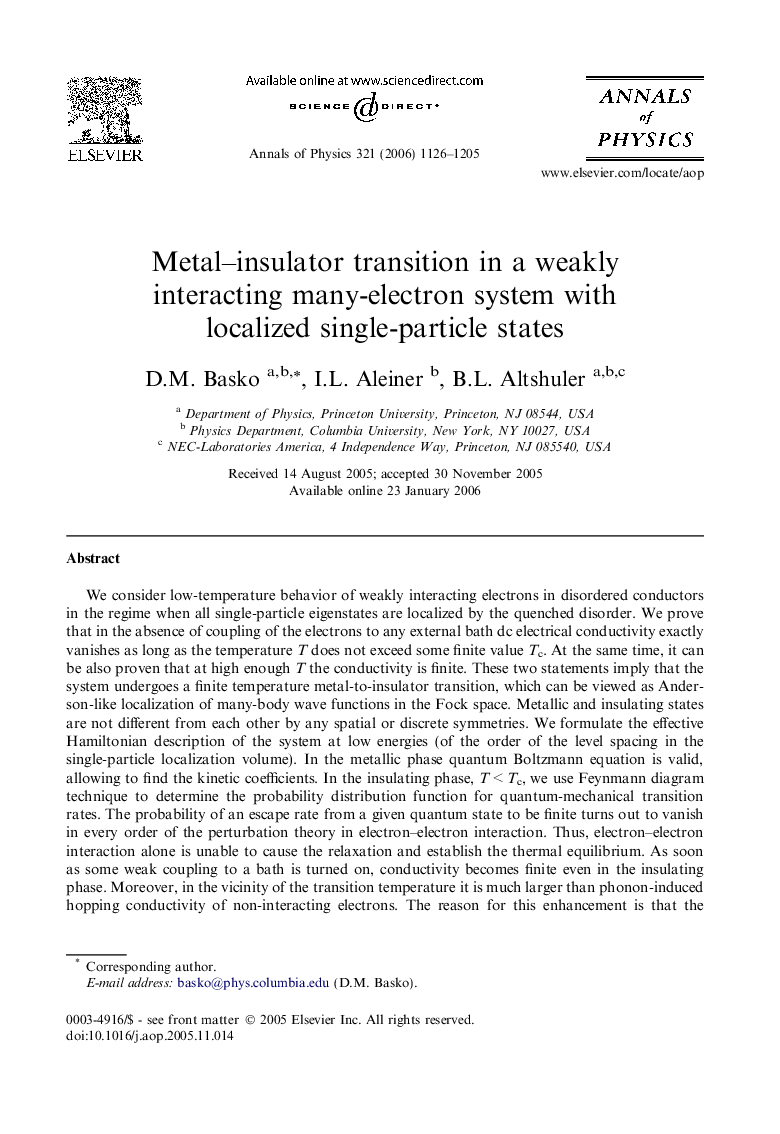| کد مقاله | کد نشریه | سال انتشار | مقاله انگلیسی | نسخه تمام متن |
|---|---|---|---|---|
| 1855490 | 1529963 | 2006 | 80 صفحه PDF | دانلود رایگان |

We consider low-temperature behavior of weakly interacting electrons in disordered conductors in the regime when all single-particle eigenstates are localized by the quenched disorder. We prove that in the absence of coupling of the electrons to any external bath dc electrical conductivity exactly vanishes as long as the temperature T does not exceed some finite value Tc. At the same time, it can be also proven that at high enough T the conductivity is finite. These two statements imply that the system undergoes a finite temperature metal-to-insulator transition, which can be viewed as Anderson-like localization of many-body wave functions in the Fock space. Metallic and insulating states are not different from each other by any spatial or discrete symmetries. We formulate the effective Hamiltonian description of the system at low energies (of the order of the level spacing in the single-particle localization volume). In the metallic phase quantum Boltzmann equation is valid, allowing to find the kinetic coefficients. In the insulating phase, T < Tc, we use Feynmann diagram technique to determine the probability distribution function for quantum-mechanical transition rates. The probability of an escape rate from a given quantum state to be finite turns out to vanish in every order of the perturbation theory in electron–electron interaction. Thus, electron–electron interaction alone is unable to cause the relaxation and establish the thermal equilibrium. As soon as some weak coupling to a bath is turned on, conductivity becomes finite even in the insulating phase. Moreover, in the vicinity of the transition temperature it is much larger than phonon-induced hopping conductivity of non-interacting electrons. The reason for this enhancement is that the stability of the insulating state is gradually decreasing as the transition point is approached. As a result, a single phonon can cause a whole cascade of electronic hops.
Journal: Annals of Physics - Volume 321, Issue 5, May 2006, Pages 1126–1205